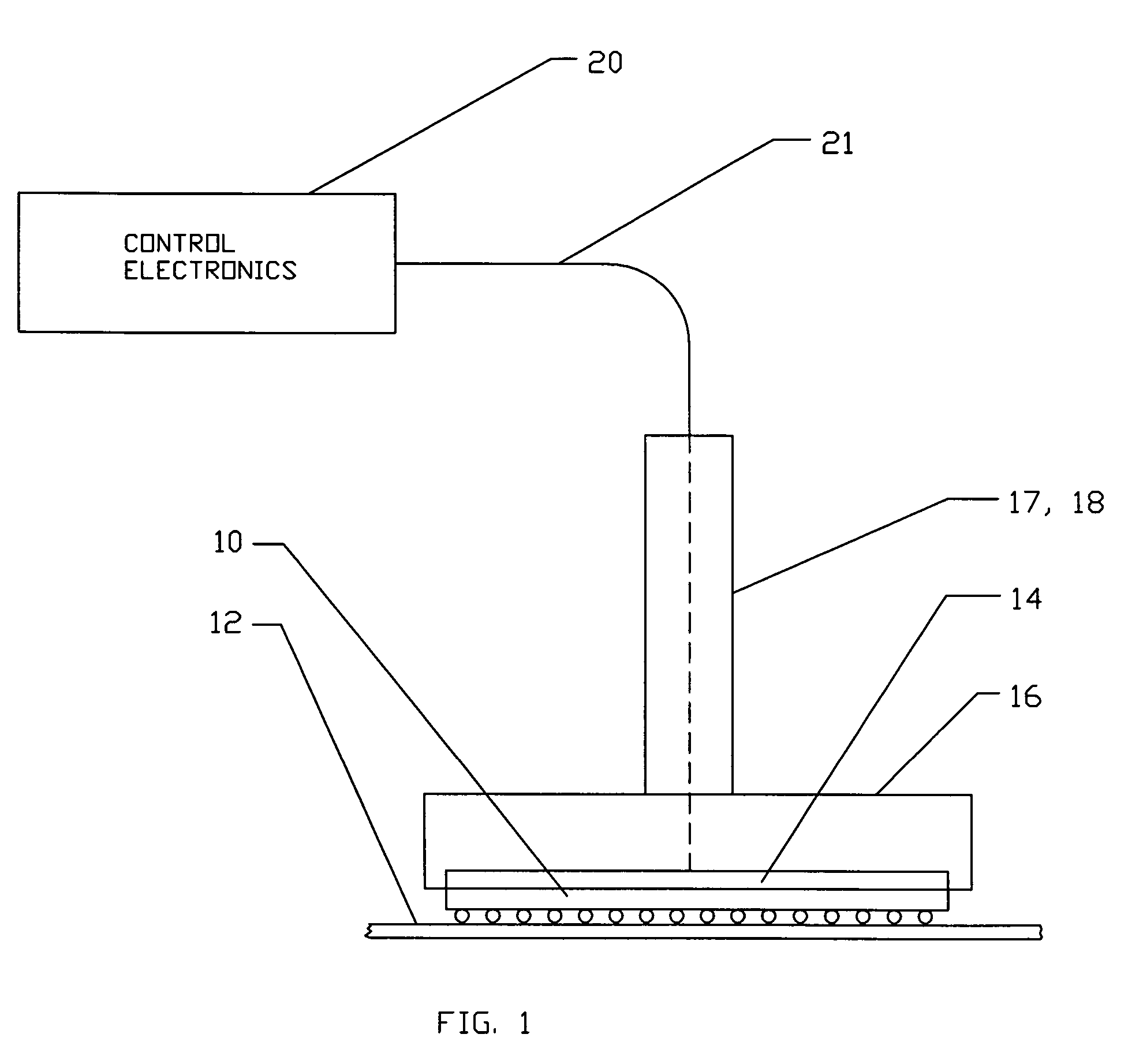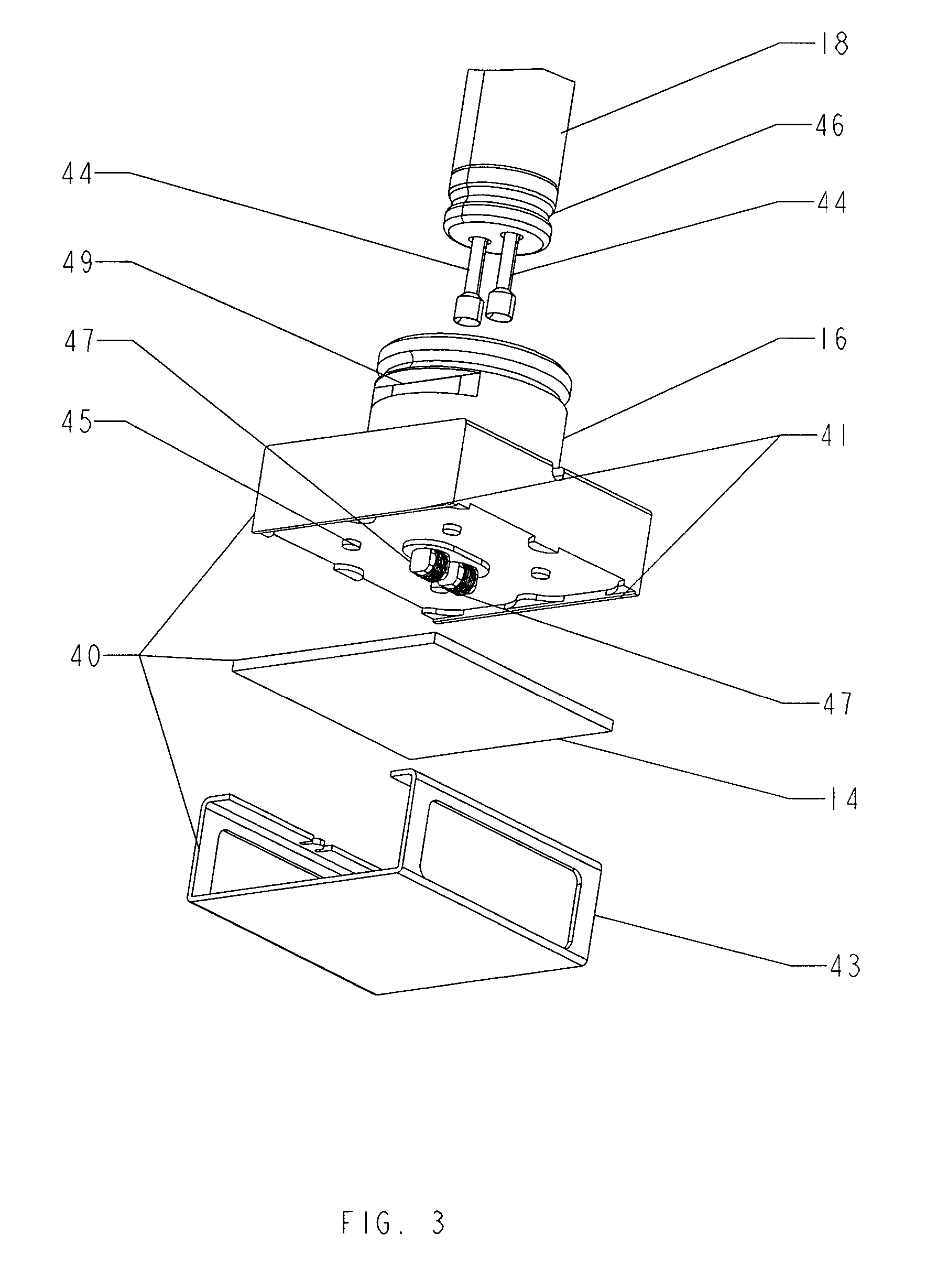Thermal attach and detach methods and system for surface-mounted components
- Summary
- Abstract
- Description
- Claims
- Application Information
AI Technical Summary
Benefits of technology
Problems solved by technology
Method used
Image
Examples
Embodiment Construction
[0056] The present invention enables SMCs to be simultaneously held, heated, positioned, thermally attached to a substrate or thermally detached and removed from a substrate, with the SMC's temperature being measured at all times. Substrates and PCBs themselves can also be heated by the present invention, to remove moisture before and minimize thermal stress during the attachment or removal of a component from the PCB, or to effect the component removal itself. A system in accordance with the invention can be hand-held or robotically deployed. It can precisely position a planar-heater on an SMC of any size, and precisely position an SMC on a substrate or grasp and pull an SMC that is to be removed from a substrate.
[0057] An illustration of a basic system per the present invention is shown in FIG. 1. An SMC 10 is to be attached to or detached from a substrate 12. Soldering and desoldering of SMDs from PCBs is used to explain the basic system in the following description.
[0058] The ...
PUM
| Property | Measurement | Unit |
|---|---|---|
| Temperature | aaaaa | aaaaa |
| Force | aaaaa | aaaaa |
| Magnetic field | aaaaa | aaaaa |
Abstract
Description
Claims
Application Information
 Login to View More
Login to View More - R&D
- Intellectual Property
- Life Sciences
- Materials
- Tech Scout
- Unparalleled Data Quality
- Higher Quality Content
- 60% Fewer Hallucinations
Browse by: Latest US Patents, China's latest patents, Technical Efficacy Thesaurus, Application Domain, Technology Topic, Popular Technical Reports.
© 2025 PatSnap. All rights reserved.Legal|Privacy policy|Modern Slavery Act Transparency Statement|Sitemap|About US| Contact US: help@patsnap.com



